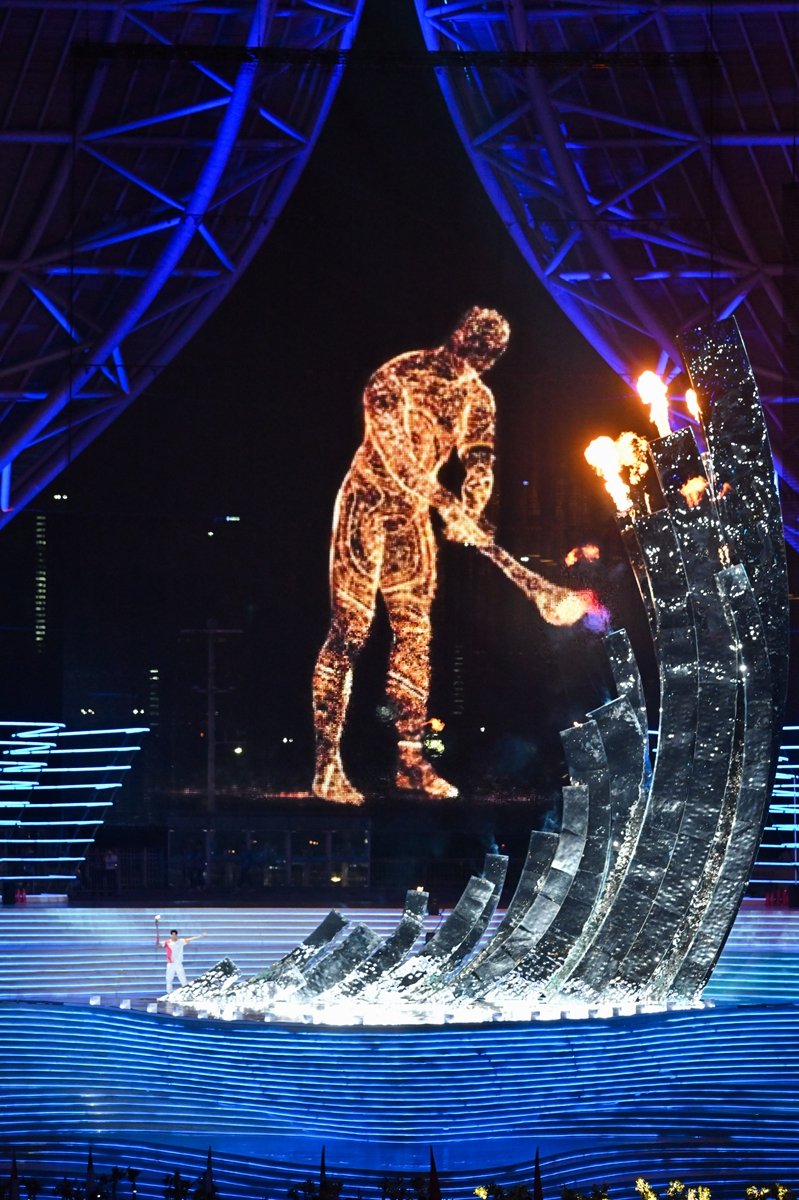Saturday night witnessed a spectacle like no other as the Hangzhou Asian Games’ opening ceremony unfurled. Marrying state-of-the-art technology with ancient Chinese culture, the event showcased China’s commitment to a modern, sustainable, and culturally rich international sports gala.
In a dazzling display, advanced technological tools such as “AR sky lantern” and “digital torch lighting” were paired with cultural presentations, creating an unforgettable visual experience. Not only were there futuristic designs, but the ceremony also intertwined visual narratives that drew from historical sites like the Liangzhu Site and iconic elements of Chinese culture such as the Yueju Opera.
Cultural sociologist Chu Xin pointed out that the incorporation of these technological elements served as proof of China’s capability to innovate while still echoing its deep historical roots. “This blend of the future with classic themes sends a message about China’s modern cultural and social growth, harmonizing with its rich history,” Chu observed.
The theme of the ceremony, “Tides Surging in Asia,” took inspiration from a Chinese saying that evokes the idea of multiple streams merging to form a powerful tide. This theme was beautifully exemplified as water, in various forms, dominated the ceremony’s visual narratives. It depicted China’s openness and warmth towards the different countries of Asia.
One performance that stood out was “The Surging Tides of Qiantang.” Based on the famed Qiantang River, known for its enormous tides and a centuries-old tradition of tide-watching, the display was both awe-inspiring and historically evocative. The ceremony brought to life the grandeur of the Qiantang tides, projecting them as vast digital images on the venue’s floor. Among the many stunning visuals was the depiction of the “fish scale tide.” The performance also showcased two tide riders, who, supported by an innovative 3D wire device, seemed to glide above the ground. Their graceful movements with the tide aptly symbolized the athlete’s spirit of bravery and determination.
Xiong Gang, an expert in Chinese folk culture, commented that tide riding was a competitive sport in ancient China. It echoes the old Chinese philosophical tenets emphasizing harmony between humans and nature. This philosophy was further illustrated in the designs of the announcement boards, which instead of the conventional square shape, resembled traditional Chinese fans adorned with engraved peony flowers, intricately created using Chinese brush painting techniques. The entire fan, astonishingly, was crafted using digital 3D printing.
Visual designer Xue Feifei remarked that such designs were not only aesthetically pleasing but also signified a designer’s confidence and reverence for their cultural roots.
Another highlight was the digital representation of the Gongchen Bridge. This allowed audiences to traverse through Hangzhou’s history, from “Lin’an,” the capital during the Southern Song Dynasty, to its current status as China’s tech epicenter.
As the event unfolded, Hangzhou’s ancient Neolithic Liangzhu culture took center stage. The jade cong, an iconic artifact symbolizing China’s ritual system, was prominently showcased. This ancient vessel, integrated into the stage as drum instruments, welcomed international participants in a grandiose manner.
The use of colors in the ceremony also drew from Chinese poetry, with a suspended screen displaying vibrant shades representing various poetic works. Guo Jinyong, the designer behind the color palette, shared that the chosen colors bore dynamic connotations and added depth to the ceremony’s theme.
With over 140 million views, the event trended on Sina Weibo, showcasing its wide-reaching impact. Astute audience members could also discern other cultural symbols, such as patterns of the “Four Nobles” – Plum, Orchid, Bamboo, Chrysanthemum, displayed as athletes made their entrance, symbolizing China’s respect and appreciation for global participants.
READ MORE:
